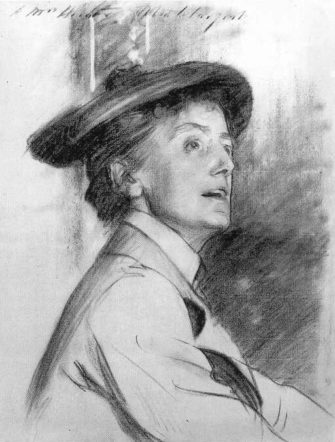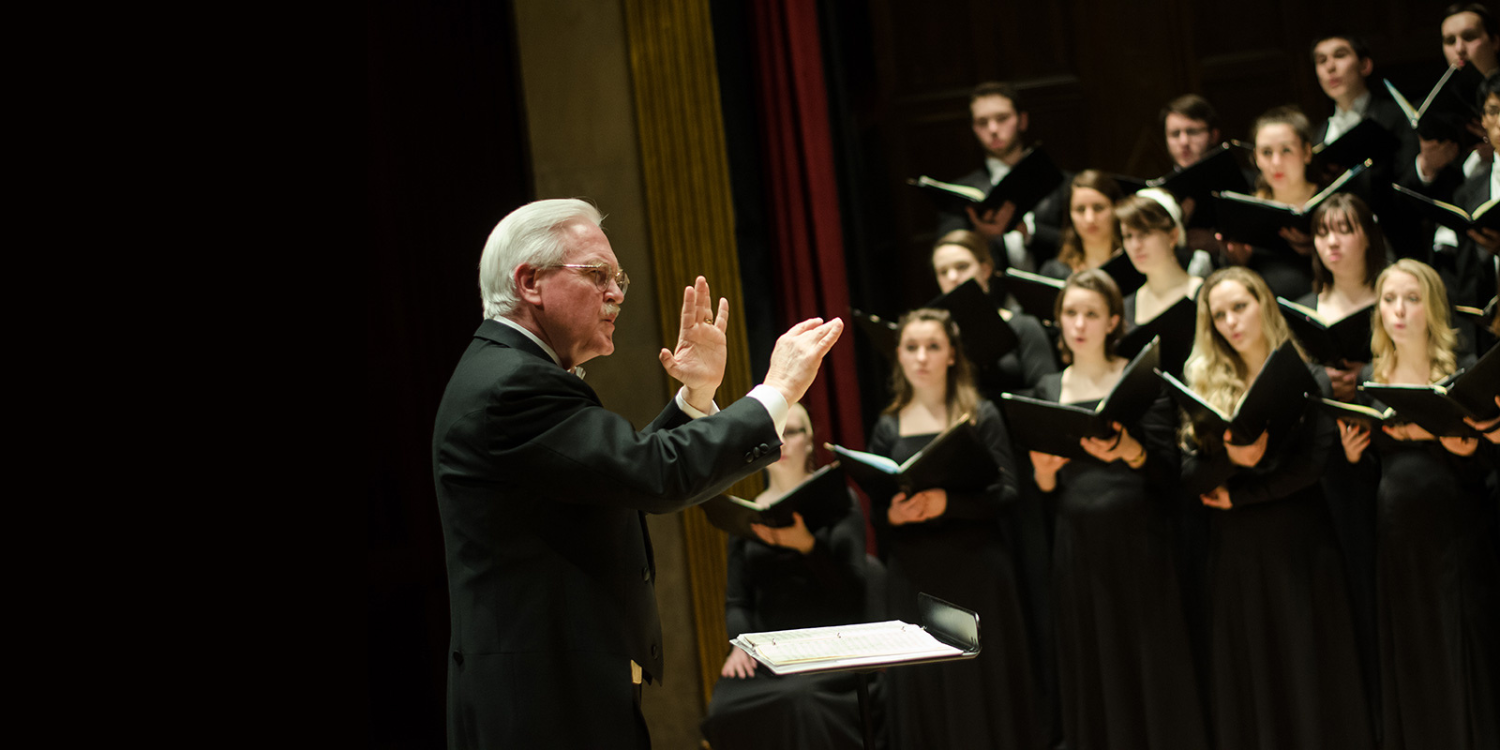The December 8 concert by the Eastman-Rochester Chorus, Eastman Chorale, and Eastman School Symphony Orchestra under William Weinert will present an exciting rediscovery: a rare performance of a large-scale choral work by a fascinating and important female composer.
Dame Ethel Mary Smyth (1858-1944) was not an obscure figure during her lifetime, but her road to becoming a respected composer in Victorian England was far from smooth. Smyth became a musician over her family’s strong objections, and studied in Leipzig, where she encountered such contemporaries as Brahms, Grieg, Tchaikovsky, and Dvořák.
In England, her music was presented by the famous conductor Sir Thomas Beecham, who praised its “guts”, and esteemed by George Bernard Shaw; she was the first woman composer (and for more than a century, the only female composer) to have an opera produced at the Metropolitan Opera; and she was the first woman composer to receive a Damehood, in 1922.
Along with her musical accomplishments, this remarkable woman wrote several entertaining autobiographies, and was politically active as a suffragist, even spending two months in prison for demonstrating. (While there, she composed a “March of the Women” and conducted its first performance with a toothbrush.)

Dame Ethel Smyth | Drawing by John Singer Sargent
Smyth’s Mass in D, written when she was in her thirties and premiered in 1891, is a major work, nearly an hour long and calling for chorus, four vocal soloists, and a large orchestra. Eastman’s student vocal soloists are Mary Fetterman, soprano; Alicia Esmeralda Barry, alto; Xuyue Qing, tenor; and Henry Griffin, baritone.
The work’s first performance was warmly received. True to the time, most critics found Smyth’s score surprisingly (or unsurprisingly) “masculine,” but agreed that she was an important composer. However, the Mass was not performed again until thirty years later, and has been very seldom performed since then. Conductor William Weinert is certain this will be its first performance in Rochester.
Weinert, Eastman’s director of choral activities, says he has been fascinated by Ethel Smyth’s Mass since he was a graduate student and first encountered the score in the University of Wisconsin library. It took a few decades until this performance, but he says that he and the Eastman-Rochester Chorus find it well worth the wait.
Weinert admits that choruses can be wary of unfamiliar repertoire, but that this time, “they’re loving it! It’s new music to almost all of them, but Smyth is close enough in style to music by Brahms or Beethoven that they do know.”
And, he adds, Smyth’s Mass in D is an easy piece to like. “It’s not quite like any other Mass setting. It most reminds me of Beethoven’s Missa Solemnis. Smyth often has the same energy, and like Beethoven, her music is full of sudden contrasts and surprises. But also as in Beethoven, the surprises are skillfully worked into a larger structure.” (Smyth also chose the same key for her Mass as Beethoven.)
Those surprises start in the orchestra, which includes a full brass section, an organ, and, unusually in a nineteenth-century religious work, lots of percussion. “I remember first looking at the score and thinking, ‘Snare drum rolls? Cymbal crashes? In a Mass?” says Weinert. “But it’s very well-orchestrated, and it works.”
He adds, “Also, there are beautiful melodies and some gorgeous, operatic writing for the soloists,” which the conductor compares to the operas of Gounod. (Not surprisingly, Smyth became a successful opera composer.)
This Mass was written at a time when Smyth had returned (temporarily) to the Anglican faith. But she was an unconventional believer, and Weinert points out that Smyth’s Mass contains more than a few unconventional, but convincing elements.
“She thought of this as a concert work and not a devotional work,” he says, and her response to the words is sometimes very dramatic, with frequent tempo changes. For example, the opening Kyrie (“Lord, have mercy”) begins quietly, as in most Mass settings, but soon switches to a stormy mood. (The Archbishop of Canterbury, no less, complained of it, “God is not so much implored as commanded to have mercy.”)
The end of the Mass also takes a surprising turn. Masses invariably end with a pleading Agnus Dei, but Smyth chose to end hers with a rousing, uninhibited Gloria which brings all the musicians into the act (including all that percussion).
“It’s definitely an unexpected ending, but then a lot of things in this Mass are unexpected,” says Weinert. “And if your response to your faith is joyful, why not express it that way?”
The Eastman-Rochester Chorus, Eastman Chorale, and Eastman School Symphony Orchestra perform Dame Ethel Smyth’s Mass in D on Friday, December 8 at 7:30 PM in Kodak Hall at Eastman Theatre.
Admission is free.
